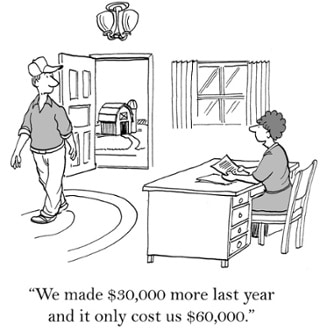
It’s that time of year. The leaves are starting to turn that rusty orange, the days are getting darker, and your Q4 sales goals are coming up quick. You’re not alone. Many companies will be rushing to achieve their revenue marks for the year. But at what cost?
One Harvard Business Review article states that in order to hit the high expectations for deals during this time of year, “sales reps give better terms to customers who wait until the last minute – with both sides knowing they can rely on dropping prices and a sure closing…”
The article goes on to say that, although it closes deals, this tactic ultimately costs companies money because their sales-win rate and deal size decreases significantly. This amounts to a loss of around $98 million in revenue a year for the studied companies.
So how do you combat this year-over-year cycle? There’s a few ways.
1. Switch Up Your Goal Structure.
Rather than focusing on year-end goals, those big, looming numbers that can seem to ominous to reach, try implementing monthly or even weekly goals instead. These much more manageable marks can help to focus workloads and create more achievable deals.
Overall engagement can increase as well. A monthly or weekly goal system allows for many more opportunities to be rewarded for a job well done or a well-orchestrated deal struck. This will drive more engaged behavior, as the chance to earn increases dramatically.
Be careful, though. Monthly goals can end up in a similar cycle to yearly goals, so just make sure not to feed into shortened deals and decreased revenue.
2. Implement a Learn and Earn System
One of the greatest ways to increase sales and close substantial deals is to enable your sales force to do so. Use educational content to teach them about things such as steps-to-sale or the ins and outs of a new product. The more interactive the content the better. People tend to like 3- to 5-minute tests and quizzes.
Find ways to reward them for completing these educational tests/quizzes. Rewards can come in the form of financial incentives, giveaways, (for example, who completed the most quizzes this week), or points in an incentive program.
One clever way is to have a tiered reward system. Passing a certain test or series of quizzes can bump participants up a tier until the reach the “master level”. Every test/quiz they pass earns them more points and opens up a new level of different reward options. New rewards mean more drive to earn points, motivating participants to take more quizzes.
3. Run a Short-Term Promotion
Short term promotions can be used throughout the year to infuse new excitement into a program or drive quarterly goals. However, they can also be wildly successfully at the end of the year in driving achievement of year-end goals. You can use this strategy to break the cycle of losses at the end of the fiscal year as well.
For instance, if your fiscal year ends in November, you can host a short-term promotion that awards sales people for increased sales of certain products or services that are popular at that time of year.
However, rather than making the competition a quantity race, you can have the Grand Prize given out to the sales person with the biggest deal. This tactic will encourage sales people not to short change your company by making smaller deals in order to hit goals.
Goals are important to maintain. They keep us organized and honest. Without goals, we’d all just be floating in the wind! However, when it comes to revenue, sometimes it’s better to take a step back and look at what those goals are really achieving and if they’re really adding to profits.
Looking for other ways to improve your sales force? Reach out to us at 888.220.4780 or marketing@hmiaward.com for more insights.
Sources:
https://hbr.org/2017/08/the-end-of-quarter-sales-rush-costs-companies-money



